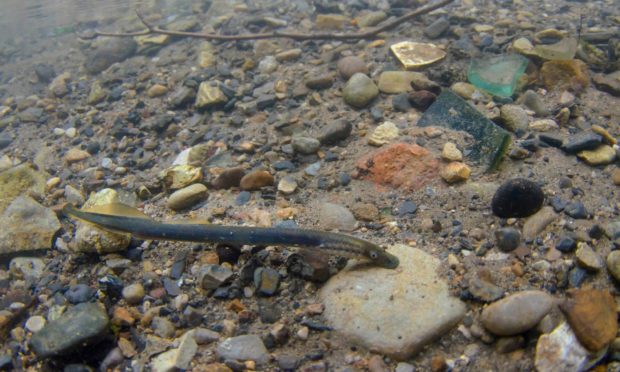It is a refugee from the embrace of evolution, a prehistoric sliver of life that occurs in our rivers and burns, and which in spring makes a brief annual appearance to spawn.
It is the brook lamprey, and for the last week or so, I have regularly ventured down to the River Devon in Clackmannanshire to seek out these intriguing eel-like creatures.
Technically they are not true fish, since they possess no jaws, and represent some of the most primitive vertebrates alive today, being over 360 million years old.
Although my efforts have been fruitless so far this year, last spring I managed to catch an individual in a side-pool of the Devon, gently scooping it out the water with cupped hands. It was about four inches long and as thin as a piece of cord.
On opening my hands to examine the lamprey, as quick as a flash it slipped through my fingers and back into the water. I caught it once more, but again it wriggled free.
It reminded me of trying to catch butterfish in rockpools down by the coast, which are also the masters of escapology by squeezing through gaps between fingers.
The only time I had ever come across brook lampreys previously was as a teenager when searching a shallow gravelly margin of the River North Esk near Penicuik in Midlothian.
Several of them had gathered in a spawning frenzy, and I watched spellbound as they writhed and wriggled, so consumed by the act of mating that they were totally oblivious to my presence.
Migratory
Most species of lamprey are migratory and spend part of their life cycle in the sea. They live for several years as larvae in streams and lakes, burrowed in silt beds, where they filter feed on micro-organisms.
Adult lampreys have a toothed sucker mouth used to latch onto other fish to feed upon their bodily fluids.
The diminutive brook lamprey, however, is different as it spends its whole life in a river, and after several years in the mud as larvae, metamorphosise into non-feeding adults, which then spawn in groups on gravel or sand beds before dying.
The River Devon also holds river lampreys and several years ago I found a dead one, which had succumbed after spawning.
River lampreys are larger than brook lampreys, and after their larval stage, migrate downstream to coastal waters to parasitise on other fish such as flounders.
One bizarre aspect of river and brook lampreys is that they may be the same species. Just as how sea trout and brown trout differ in behaviour yet are really one and the same, these two types of lamprey have evolved their own different lifestyles.
The lamprey is a true natural enigma, and my quest to find one this spring will continue, although with spawning drawing to a close, I fear time is no longer on my side.
Info
The sea lamprey is also found in Scottish rivers but is much rarer. Historically lampreys were regarded as a delicacy throughout Europe and are still highly prized in some countries.










